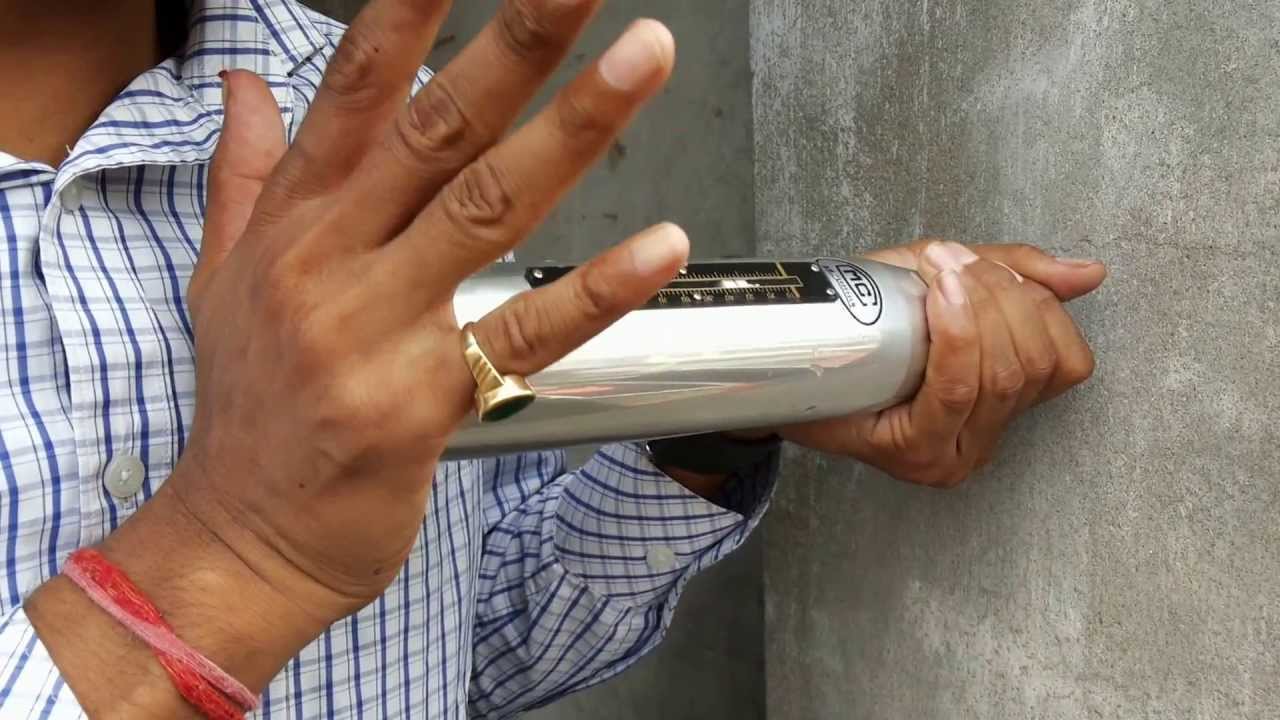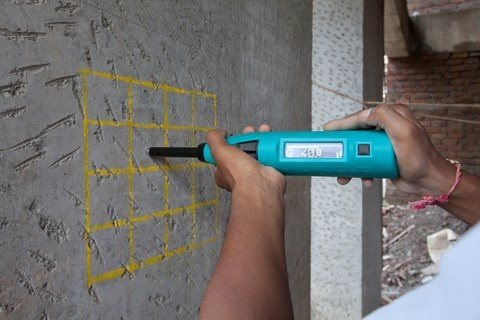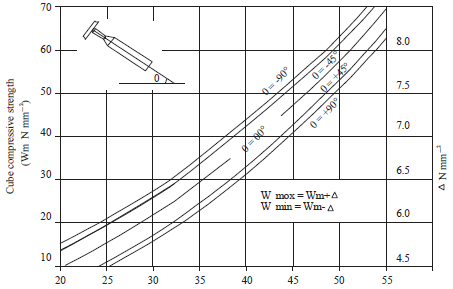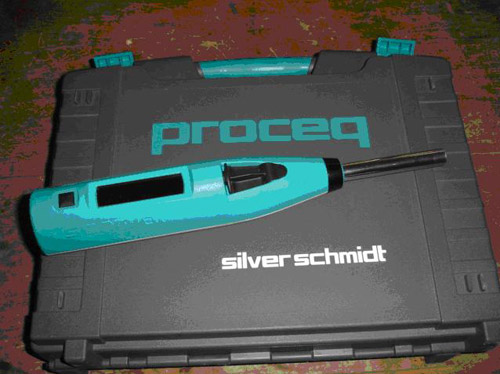Concrete strength measurements may be sometimes required for various reasons including: Quality verification (QC), hardness of new concrete, structural condition evaluation, slab loading alterations or preliminary assessments on strength of aged concrete structures.
Depending on the purpose, our testing procedures, data processing and reporting follows the ASTM C805-02 and ASTM D5873 industry standards for measuring the dynamic elastic properties including surface hardness and penetration resistance as direct indicators of strength of concrete, using Schmidt hammer, also known as Swiss hammer or a rebound hammer method.
This test method is applicable to assess the in-place uniformity of concrete, to delineate regions in a structure of poor quality or deteriorated concrete, and to estimate in-place strength development.
Benefits
Structural Auditing QA/QC
- Concrete strength assessment
- Evaluation of Structural durability, condition and service span
- Preliminary assessment of remendability
- Pre-purchase of structure assessment
- Pre-insurance of assets (insurers, banks, guarantors)
Method
Testing procedure, data acquisition, processing and reporting are in accordance to ASTM C805-02 and ASTM D5873 industry standards.
A hammer measures the rebound of a spring-loaded mass impacting against the surface of the sample. The test hammer will hit the concrete at a defined energy. Its rebound is dependent on the hardness of the concrete and is measured by the test equipment. By reference to the conversion chart, the rebound value can be used to determine the compressive strength in KPa or MPa units.
Depending on the job specification we’re can deploy various types of units that suit the impact energy requirements:
L-0.735 Nm , N-2.207 Nm, M-29.43 Nm
Concrete Strength Determination
To use this test method to estimate strength requires establishing a relationship between strength and rebound number. The relationship shall be established for a given concrete mixture and given apparatus. The relationship is established over the range of concrete strength that is of interest.
To estimate strength during construction, establish the relationship by performing rebound number tests on moulded specimens and measuring the strength of the same or companion moulded specimens. To estimate strength in an existing structure, establish the relationship by correlating rebound numbers measured on the structure with the strengths of cores taken from corresponding locations.







